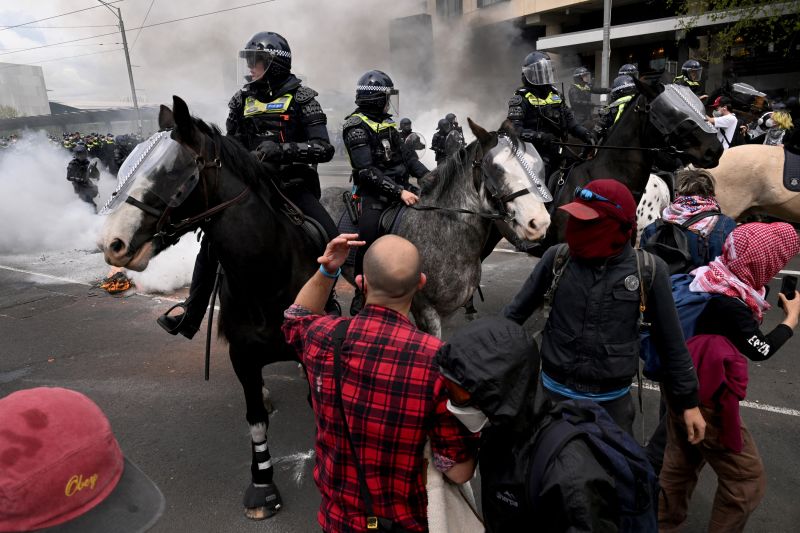In the heart of Melbourne, Australia, a seemingly peaceful demonstration dramatically escalated into a visually striking zenith of raw emotions as protesters, vehemently opposing the renowned Australian Defence Exhibition, engaged in intense confrontations with the local law enforcement. This incident, which marked an unprecedented chapter in the recent history of local protests, was a vivid display of the rapidly growing public discontent with the transparent admission to the incorporation of advanced military technologies.
The Australian Defense Exhibition, a significant event in the region’s annual calendar, usually attracts international attention for its cutting-edge military equipment exhibition. This year, however, the event made headlines not for the technological marvels on display but for the outpouring of stark public dissent which metamorphosed into an explosive clash with the police.
Protesters, an eclectic mix of human rights activists, military critics, and peace campaigners, began their demonstration with peaceful marches outside the exhibition venue. They raised an assortment of banners and placards that bore bold messages calling for disarmament, a decrease in military spending, promotion of peace initiatives, and greater accountability in defense exports.
Chants against war and military aggression filled the air, echoing through the narrow streets of Melbourne, as protesters exercised their democratic right to freely express their viewpoints. The event was initially peaceful, with interactions between the police and protesters confined to quiet conversations and the occasional handing out of leaflets.
However, as the defense show progressed and the number of attendees swelled, the protests outside the venue escalated. Tensions between law enforcement and protesters began to mount, aggravated by the growing numbers of both groups and the escalating vehemence emanating from the gathered crowds.
Eventually, this powder keg of tension exploded into an afternoon of turmoil as protesters began physically blocking attendees from entering the exhibition. Police officers were ordered to disperse and contain the protesters, leading to sporadic episodes of scuffles, pushing, and shoving, with several individuals on both sides reportedly injured.
Riot police were subsequently deployed and non-lethal crowd dispersal methods like tear gas and water cannons were used. These measures, however, seemed to invigorate the protesters as they engaged further with the officers, leading to more intense skirmishes.
Caught in the crossfire were the attendees of the defense show. While some were able to enter the venue amid the chaos, others were obstructed by the protesters. A few attendees, unnerved by the unrest, reportedly returned to their hotels or sought refuge in nearby buildings.
What was envisaged as a regular defense show had transformed into a large-scale public protest. Waves of indignation directed at the military exhibition resulted in an intensity not seen in Melbourne’s protest history.
However, amidst the seeming chaos, a certain sense of purpose could be discerned. The fervor of the crowd underlined a profound disapproval of military technology proliferation and the perceived prioritization of defense expenses over more immediate social concerns.
As night eventually swallowed the city, the intensity of the conflict slowly lessened, but the lingering effects of the day’s encounter were still palpable. Passionate voices were replaced by an eerie silence; placards and banners littered the ground, bearing silent witness to the day’s events.
While the outcome of this clash remains unclear, it indubitably marked a significant moment in Australia’s public demonstrations history. The conflict served as a wake-up call to the Australian government and the international community regarding the growing public dissatisfaction with defense technology exhibitions. Amid the debris and echoes of the protest, one could not deny the pressing need to listen, understand, and address these escalating public concerns.




